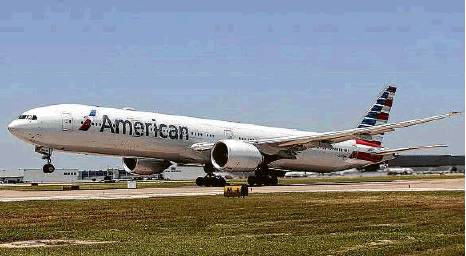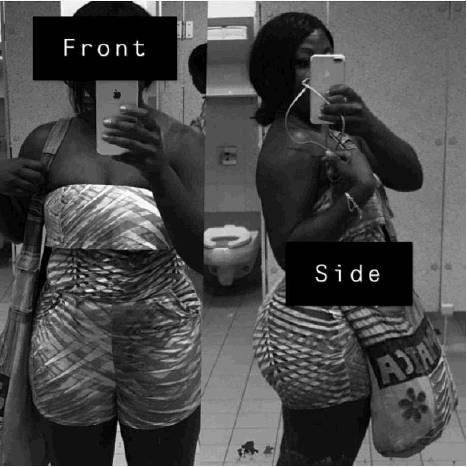TRAVEL
What’s the dress code for flying? No one knows for certain
By Hannah Sampson WASHINGTON POST
Add rompers to the list of clothes that can potentially get you yanked from a flight. That garment joins baggy pants, short skirts, low-cut blouses, sheer skirts, leggings and crop tops in the catalog of items that have been flagged as problematic by airline employees who either forced passengers to cover up or get off a plane in recent years.
Tisha Rowe, a Houston woman, found herself at this intersection of unclear policy during an American Airlines flight from Jamaica to Miami late last month, when she said a flight attendant told her she couldn’t fly without covering her one-piece shorts and strapless-top set. Without a jacket handy, she said, she was ultimately forced to put a blanket over her outfit so she could take the flight with her 8-year-old son, who was in tears after the interaction; she has retained an attorney. The airline apologized this week and said it issued a refund of her fare, though Rowe says she has yet to receive it.
How can passengers avoid these predicaments? Are there clear dress codes provided by airlines upfront? In most cases, the answer is: absolutely not.
“Different airlines have their own policies regarding dress, but they are often vague and leave an exorbitant amount of discretion to the airline employees,” Adam Anolik, a San Francisco-based attorney who specializes in travel law, said in an email. He added that the latitude given to airline employees can be “problematic, as inherent biases and hang-ups can come into play when the employees make the determination.”
In an interview Wednesday, Rowe said she travels extensively and never imagined that she would be singled out for her clothes.
“I like to be comfortable when I travel,” she says. “I don’t feel my attire was significantly different than other passengers I’ve seen on other” trips she’s taken.
The incident casts a light on the thorny issues that can arise — and accusations of discrimination that can follow — when an airline leaves enforcement of an unwritten, abstract dress code up to the judgment of gate agents, flight attendants and pilots.
Each airline’s dress code — a generous term — is spelled out in individual contracts of carriage. United says it can refuse to transport a passenger who is “barefoot or not properly clothed.” Delta says it can keep a passenger off a plane if attire “creates an unreasonable risk of offense or annoyance to other passengers.” Southwest and JetBlue say clothing cannot be “lewd, obscene, or patently offensive.” For its part, American tells passengers: “Dress appropriately; bare feet or offensive clothing aren’t allowed.” Airlines either pointed to their written policies or did not respond to questions about dress code guidelines.
Hawaiian Airlines gets a little more detailed, requiring clothes to cover the upper and lower parts of the torso. In: tank tops, tube tops, halter tops and shorts. Out: Speedos and bikini bottoms.
“You don’t know who’s going to be offended,” says Benet Wilson, founder of the travel writing, consulting and multimedia company Aviation Queen. “One person’s offense is another person’s ‘I don’t have any problem with this.’ It’s all so very subjective.”
Wilson, who is also an editor at the travel website The Points Guy, said she spent much of Wednesday morning talking about the romper incident with friends. “The tenor has been: Why did they find this particular woman’s romper so offensive when they have seen people wearing much worse?”
The lack of consistency opens up airlines to criticism about whose clothing they target; Rowe is black, and her attorney, Geoffrey Berg, has called the incident a “sexist, racist attack.” He said Rowe wants to give the airline “an opportunity to make it right” but will consider legal options if it doesn’t.
Anolik and Wilson said passengers who feel they’ve been unfairly singled out for what they’re wearing have no real recourse in the moment. They advise anyone in the situation to do what Rowe did: Follow instructions in order to stay on the flight and document what happened.
Since the incident, Rowe said has heard about cases involving men who wore only boxers or a tight swimsuit during portions of a flight. A man wearing undergarments, a sheer wrap sweater, thigh-high stockings and heels was allowed to board aflight in 2011.
“I just don’t think people police men’s bodies as much,” she says.
While recent high-profile cases have focused on women, there are no official statistics that track such cases. In past years, some men have also been the subject of dress code crackdowns, including two separate cases in 2011, when men were kicked off flights after arguing with airline staffers who asked them to pull up baggy pants. One was Green Day singer Billie Joe Armstrong, who was on a Southwest flight; the other, a college football player on a U.S. Airways flight, was arrested after the airline said he refused their requests to pull his pants up in an incident that drew protests by an NAACP chapter. Another man was kicked off a Spirit Airlines flight in 2012 after the airline said he became verbally abusive and threatening after employees asked him to pull up his pants.
Rowe said she believed race played arole in her situation. She had already boarded the plane when she was asked to step back onto the jetway. She said the flight attendant who told her she had to cover up said that the request was “captain-approved.” That flight attendant was black, and the pilot was a white man, Rowe said.
“I feel that they took advantage of me as a passenger because of my race, that they felt empowered,” Rowe says. “Whether that was implicit or explicit, I can’t know that without knowing where the complaint came from.”
She said she learned recently about that the NAACP’s 2017 advisory warning black travelers that booking and boarding flights on American Airlines could subject them to “disrespectful, discriminatory or unsafe conditions.” The organization lifted the caution last year, satisfied that the airline was making progress on training, examining its own diversity and inclusion efforts and investigating customer complaints.
“It’s time that we as a community hold them accountable to really fix these issues,” Rowe says.
“We are proud to serve customers of all backgrounds and are committed to providing a positive, safe travel experience for everyone who flies with us,” an American Airlines spokeswoman said this week. In an update to employees in March, the carrier said it was hiring a chief inclusion and diversity officer and creating an office of diversity, equity and inclusion. The airline also said all staffers were on track to complete computer-based implicit-bias training soon. And, American said, a new team has been in place since last summer to investigate all customer discrimination claims.
Anolik, the travel attorney, believes airlines could remove some of the subjectivity by spelling out more specific guidelines so passengers come to a flight better prepared. Wilson doesn’t see that happening — or necessarily think it’s the best idea for carriers to come up with “ridiculous long documents and pictures of what’s appropriate.”
“It’s just a shame that we all have to kind of think about these things, and try to guess what airlines are going to accept and not accept,” she says.
Rowe said she would like to see more transparency in advance about what airlines would or would not allow on a flight. And she wants better training for employees and accountability in situations like hers.
“I think that if apassenger is required to modify their appearance to appease the airline, then it should be documented,” she says. “Those incidents should be reviewed.”


